Music chords are the fundamental building blocks of any musical composition.
They can evoke emotions, set the tone, and create a narrative within a track.
As well as being a source of harmonic richness, they are the backbone that supports a melody and rhythm.
That’s why, as a music producer, knowing how to construct, manipulate, and apply chords is very important because it enables you to shape the feel of your track.
Plus, it helps you develop a unique style that resonates with your audience.
In today’s article, we’ll be breaking down:
- What music chords are ✓
- How to understand chords for epic tracks ✓
- Major and minor chords ✓
- Chord qualities and roles ✓
- Major, minor, diminished triads, etc. ✓
- Advanced chords ✓
- Popular chord progressions ✓
- Chords in various music genres ✓
- Music theory essentials ✓
- Much more ✓
You’ll be equipped to construct compelling chord progressions and understand the intricate details of chord qualities.
This way, you can create rich, dynamic musical pieces that captivate your audience and manipulate chords proficiently, just like a professional.
So, let’s dive in…
Table of Contents
What are Music Chords?
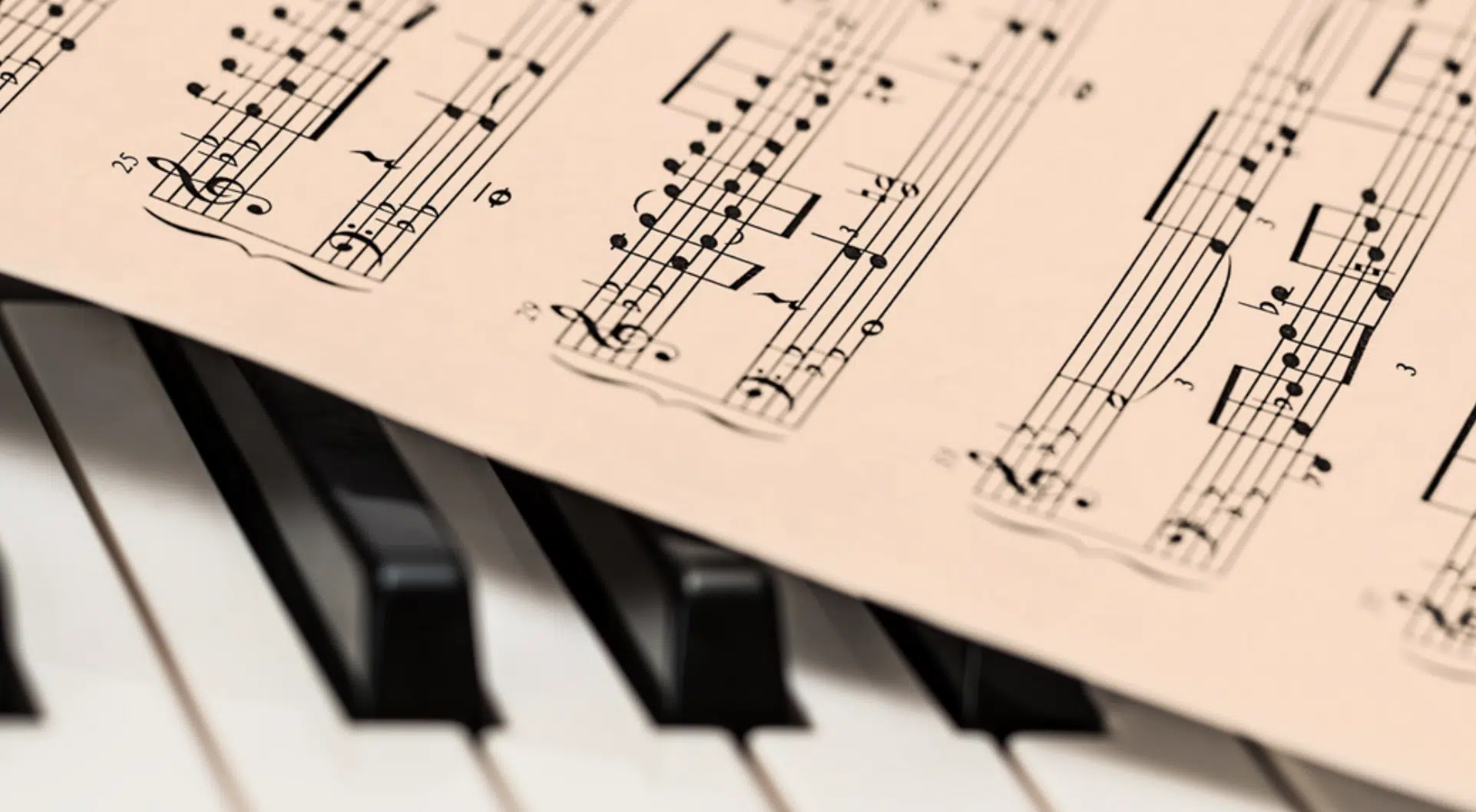
Music chords form the heart of most musical pieces, serving as the fundamental building blocks that give harmony its character and depth.
A music chord is essentially a group of notes played simultaneously.
The way these notes are combined can evoke a wide range of emotions and atmospheres in a composition that draws listeners in and keeps them intrigued.
The basic chords, like the C Major chord or A minor chord, are usually constructed using three notes.
However, chords can be more complex, incorporating additional notes for richer harmonies and dynamics.
The variety of chords and their potential combinations offer an endless palette for musicians to express their creativity.
- The Major Chord, with its bright and conclusive sound, is often used to convey happiness or resolution.
- The Minor Chord, on the other hand, with its sad tone clusters, typically reflects sadness or tension.
The choice and arrangement of these chords can drastically change the mood and direction of a piece.
Understanding music chords is not just about knowing which notes to play together.
It’s about grasping the music theory behind why certain chords work well together and how they can be used to create a compelling narrative within music.
This knowledge is crucial as it allows you to construct and manipulate chords using music production software to achieve the desired effect in your tracks.
The Basics: Major and Minor Chords
Having grasped the fundamental role of chords in music, let’s delve deeper into the basics of chord structures, particularly major and minor chords. These basic chords form the foundation of most musical compositions and are essential for any producer looking to create compelling tracks.
-
Understanding Major Chords
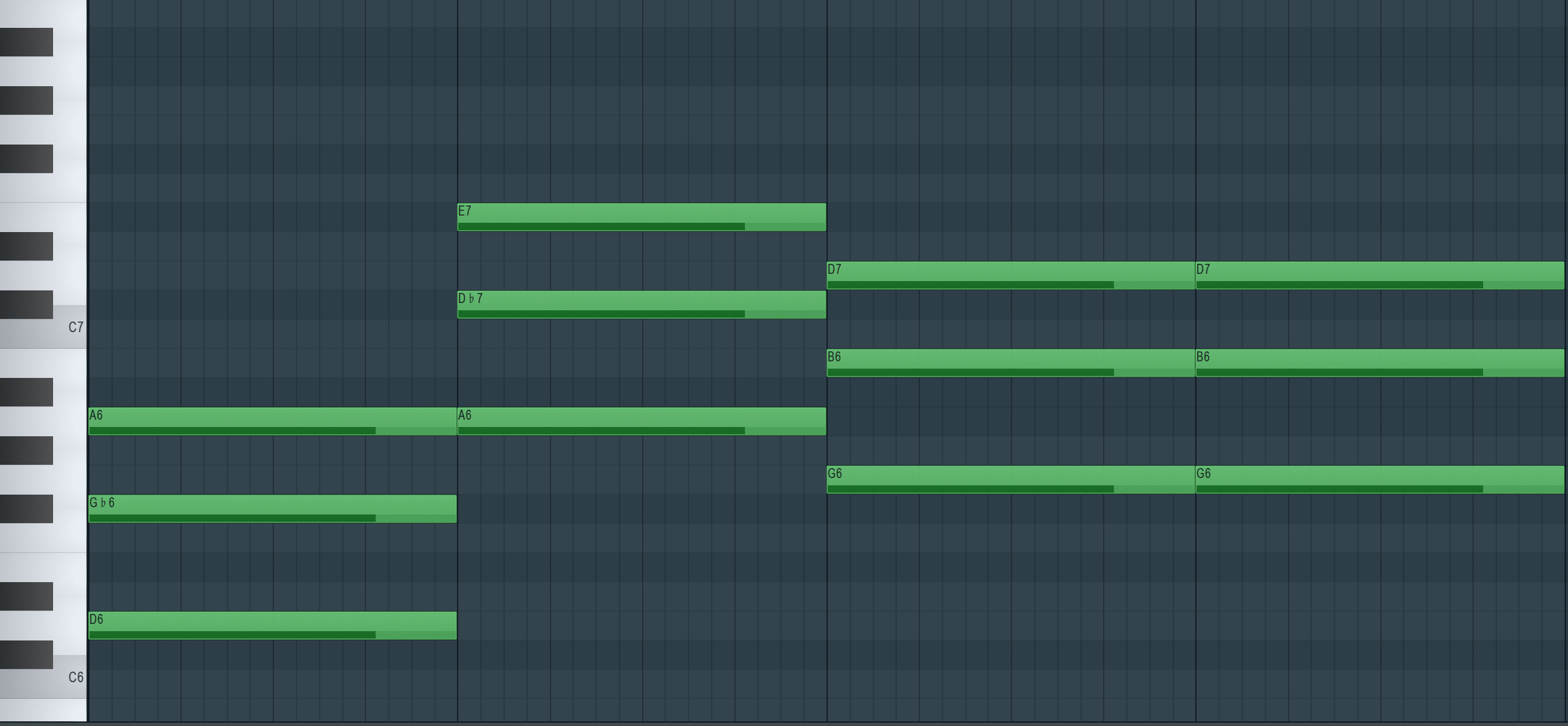
Major chords are often the first type of chord learned by musicians and producers alike.
A Major Chord is constructed using a:
- Root note
- Major third
- Perfect fifth
For instance, the C Major Chord, one of the most commonly used chords, is composed of the notes C (the root), E (the major third), and G (the perfect fifth).
This combination results in a bright and uplifting sound characteristic of major chords.
The structure of a major chord is consistent across the major scale.
Whether it’s a G Major Chord or an F Major Chord, the interval relationships remain the same: a major third followed by a minor third.
This uniform structure makes major chords easy to identify and play, especially for beginners.
Major chords are pivotal in Western music, forming the basis of countless melodies and harmonies in music cultures and genres ranging from classical music to trap and pop music.
Major chords often create a sense of happiness, brightness, or resolution.
Understanding how to construct and manipulate major chords using production software is valuable for any producer.
Plus, major chords can be varied and enriched by adding additional notes 一 such as in a diminished seventh chord, extended chords, or broken chords.
These variations add complexity and depth to the basic major chord structure.
This allows for more expressive and sophisticated harmonies.
Exploring these extended forms of major chords can open new avenues for creative expression in popular music production.
-
Exploring Minor Chords
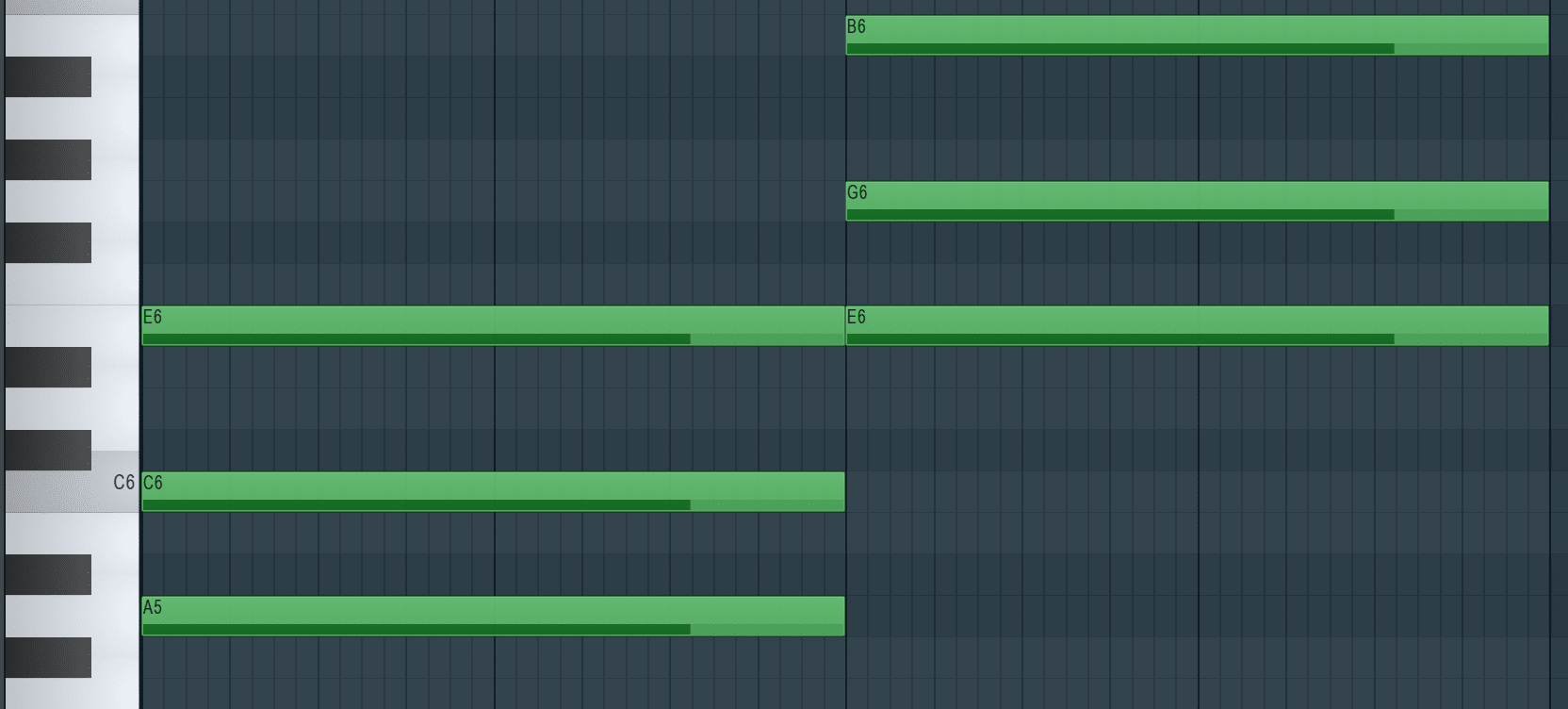
Minor chords, characterized by their sad and sometimes introspective quality, are as essential as major chords in music production.
A minor chord is built similarly to a major chord but with a critical difference.
It consists of a:
- Root note
- Minor third
- Perfect fifth
Taking the C Minor Chord as an example, it comprises the notes C (root), E♭ (minor third), and G (perfect fifth).
This alteration from a major third to a minor third gives the minor chord its distinctively somber tone.
Minor chords are pivotal in creating depth and emotion when you write music.
A producer’s ability to effectively use minor chords (such as the A Minor Chord or E Minor Chord) can significantly influence the mood and feel of a composition.
Minor chords can evoke feelings of sadness, introspection, or even mystery 一 making them a powerful tool for a skilled producer, sound designer, and audio engineer.
Minor chords can be varied and expanded, similar to major chords.
Producers often experiment with minor seventh chords, minor triads, and other variations to add complexity to their music.
For instance, a C Minor Seventh Chord adds a minor seventh on top of the basic C Minor Chord, which can introduce a layer of richness and sophistication.
Understanding these nuances of minor chords is crucial for any digital music producer aiming to create emotionally resonant and compelling music.
Chord Qualities and Their Roles
Chord qualities are like colors in a painter’s palette; each adds a unique shade and emotion to a musical piece.
Beyond the fundamental major and minor chords, there are various chord qualities at your disposal, each contributing its distinct character.
Augmented chords, diminished chords, and various extended chords help you paint more complex and nuanced harmonic landscapes in your tracks.
NOTE: The following sections are just a quick introduction, we will break down augmented, diminished, and extended chords in detail a little later on.
-
Augmented Chords
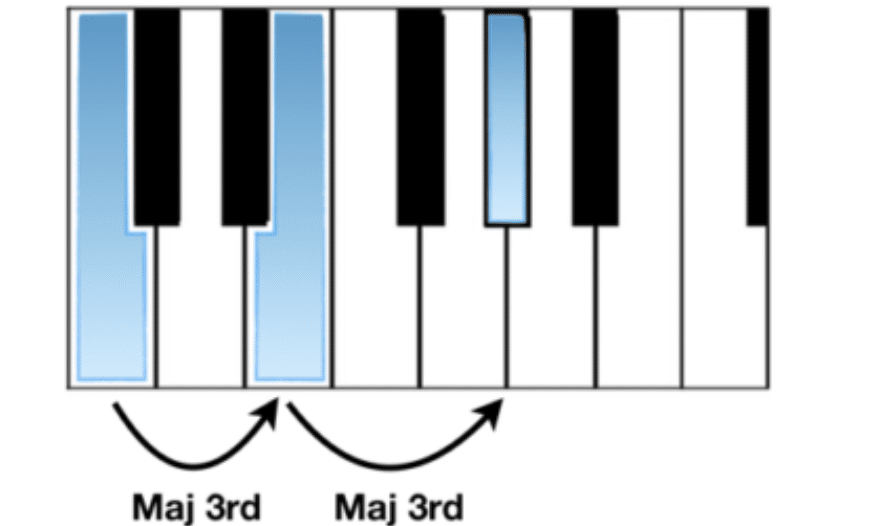
Augmented chords with their raised fifth create tension and expectation, often resolving to a more stable chord for dramatic effect.
The augmented fifth, a hallmark of these chords, introduces a bright, somewhat dissonant sound.
An augmented fifth can add intrigue and complexity to a chord progression.
-
Diminished Chords

Diminished chords, with their minor third and diminished fifth, bring a sense of unease or drama.
This makes diminished chords ideal for creating tension in a composition.
It’s essential to understand a diminished triad, which consists of a root, minor third and diminished fifth.
As well as a half-diminished chord, which adds a minor seventh on top of a diminished triad to offer a unique sound.
-
Extended Chords
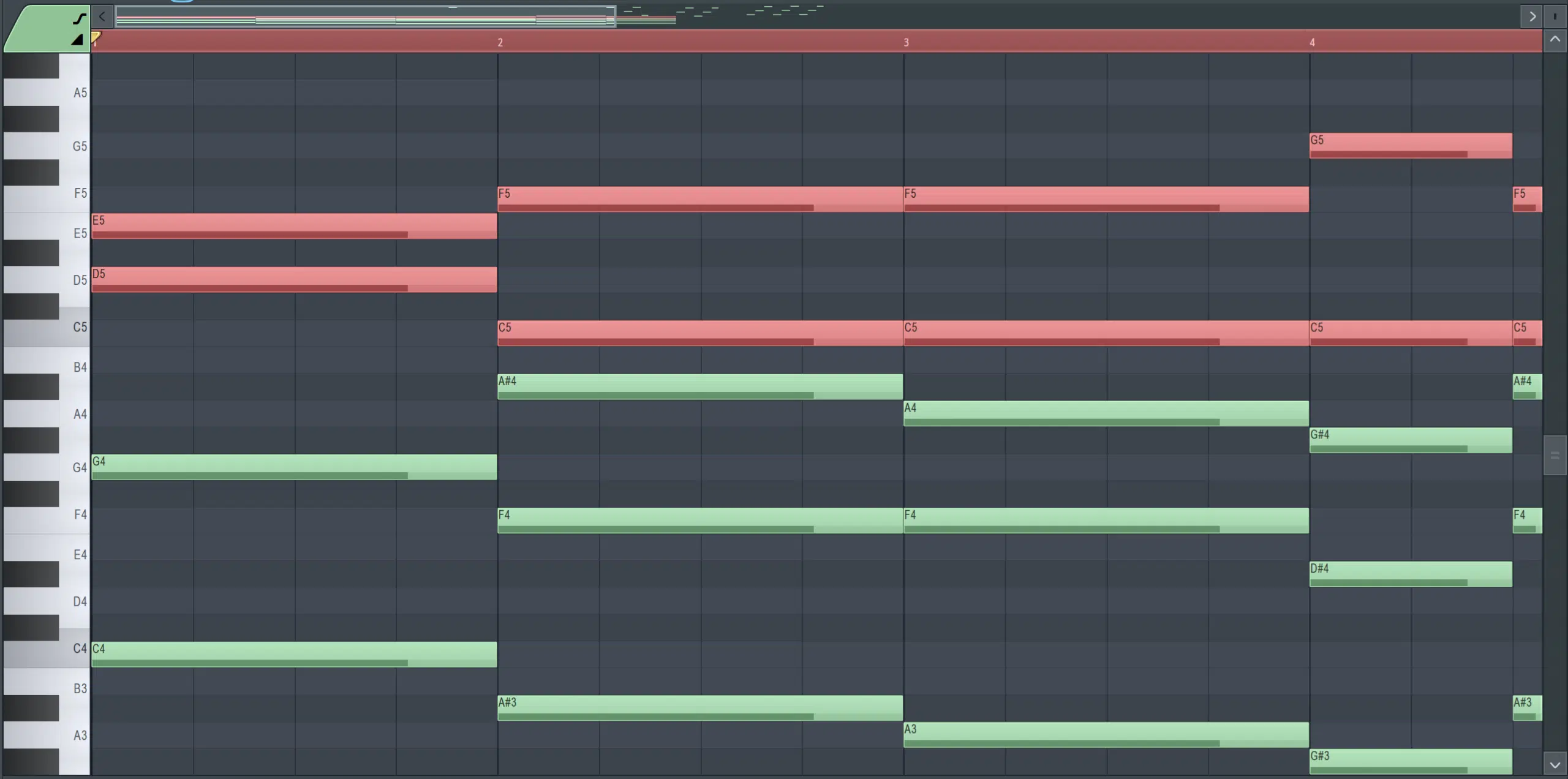
Extended chords, such as ninth, eleventh, and thirteenth chords, take basic triads and add additional notes from the scale, creating a layered and sophisticated sound.
These chords are often used in jazz and fusion music, where their complex harmonies can be fully appreciated.
Using extended chords in digital music production can elevate a simple progression to something more intriguing and rich.
Whether it’s the suspenseful tension of a diminished chord or the lush complexity of an extended chord, each chord quality brings its unique contribution.
For instance, a progression that moves from a basic C Major Chord to a C Augmented Chord can create a surprising shift in the mood, capturing the listener’s attention.
Understanding and utilizing these different chord qualities allows you to express various emotions and moods.
The Building Blocks: Triads
Having explored the diverse world of chord qualities, it’s crucial to understand the fundamental building blocks of chords: triads. Triads are the simplest form of chords but are incredibly versatile, forming the basis of most harmonic structures in popular music.
-
Major Triads: The Foundation
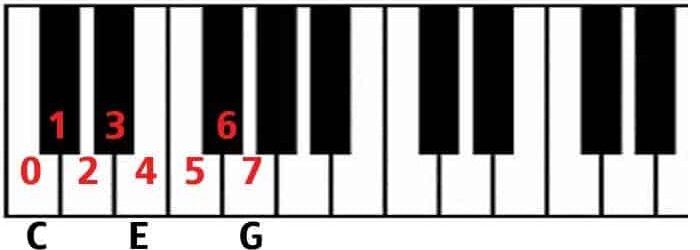
Major triads are perhaps the most fundamental and widely used chords in music.
A major triad consists of three notes:
- A root note
- A major third
- A perfect fifth
This configuration produces a harmonious and stable sound, so major triads are often associated with positive, uplifting emotions.
For example, the C Major Triad, comprising the notes C, E, and G, is a staple in various musical genres, from classical music to pop music.
The beauty of major triads lies in their simplicity and versatility.
They can be played in different inversions, where the order of the notes is changed to create varied sonic textures.
For example, a C Major Triad in first inversion (E, G, C) has a different feel than its root position (C, E, G).
Understanding these inversions is crucial for digital music producers, as it allows for more creative chord voicings and progressions.
Major triads can be manipulated in digital music production using various software tools and plugins to achieve unique sounds.
Producers can experiment with different timbres and effects, such as reverb or delay, to enhance the character of these triads.
Also, layering multiple major triads at different octaves can create a rich, full-bodied sound ideal for creating impactful moments in a track.
-
Minor Triads: Expressive Depths
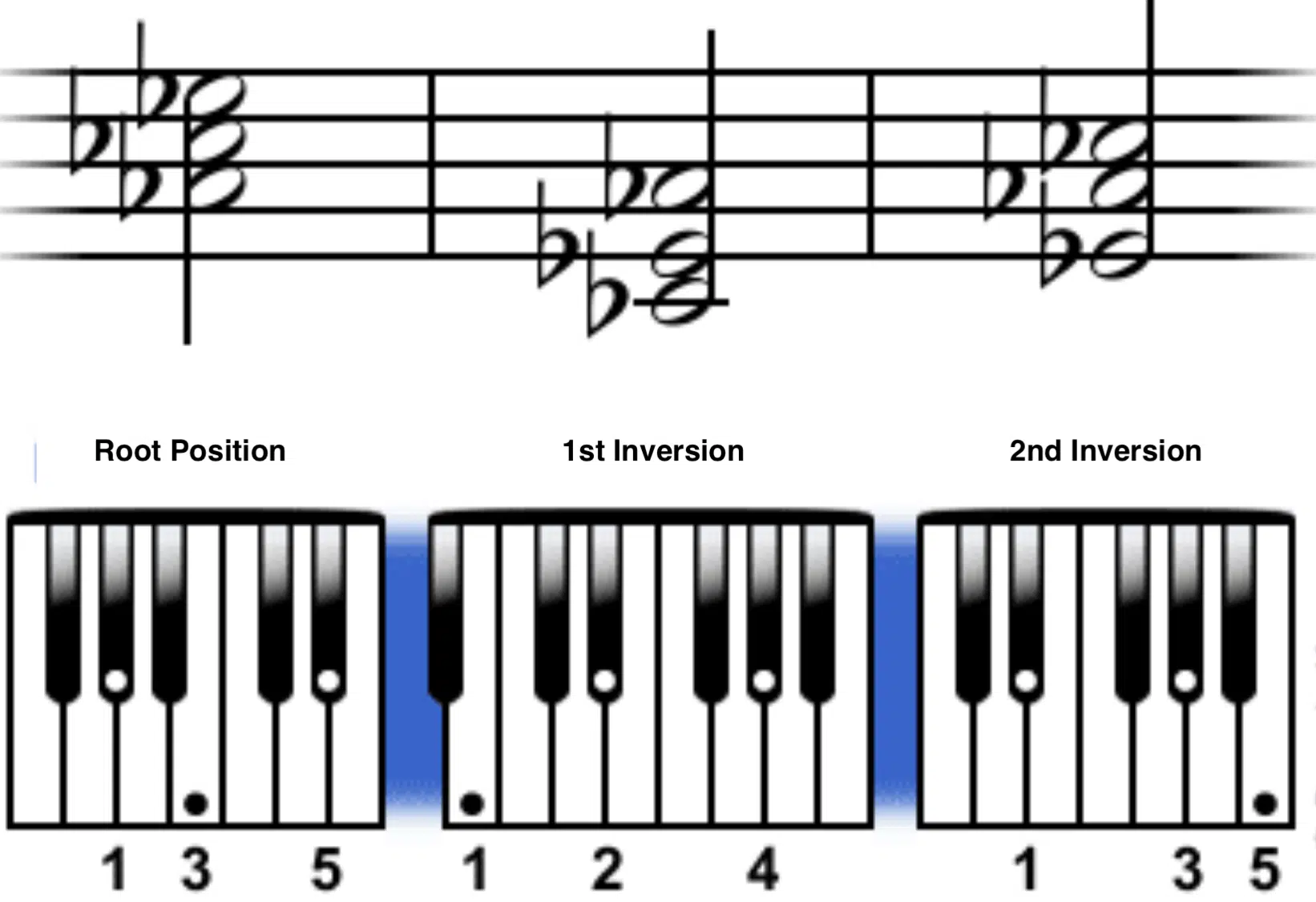
Minor triads, consisting of a root, a minor third, and a perfect fifth, contrast the bright sound of major triads.
The minor third interval gives these triads a more somber, reflective quality; making them essential for conveying emotions like:
- Sadness
- Longing
- Introspection
For instance, an A Minor Triad, made up of the notes A, C, and E, provides a melancholy sound that can set a reflective or moody tone in a track.
In digital music production, minor triads are invaluable for creating emotional depth and complexity.
They can craft moody atmospheres, build tension, or add contrast to a predominantly major-key composition.
Like major triads, minor triads can also be played in different inversions 一 offering a range of sonic possibilities.
A minor triad in second inversion (E, A, C) can create a sense of suspense or anticipation, adding a dynamic element to a musical piece.
Moreover, minor triads serve as the foundation for more complex chord structures.
By adding additional notes, such as a seventh or a ninth, a minor triad can be expanded into a minor seventh or minor ninth chord.
These extended chords provide a richer harmonic texture and can add a layer of sophistication to a track.
They are particularly popular in genres like jazz, R&B, and electronic music (EDM), where nuanced harmonies are celebrated.
-
Diminished Chords: Breaking it Down

Diminished chords, as we discussed, consisting of a root, a minor third, and a diminished fifth, stand out for their tense and unresolved sound.
They create a sense of dissonance and instability in music, often leading to a more stable chord in a progression.
For example, a C Diminished Chord, made up of the notes C, E♭, and G♭, contrasts the more consonant major and minor chords.
Diminished chords are powerful tools for adding dramatic tension and complexity to a composition.
Their unique sound can be particularly effective in genres like jazz, classical, and progressive rock, where harmonic exploration is key.
A well-placed diminished chord can act as a pivot point in a chord progression.
It leads the listener from one harmonic area to another 一 often creating an unexpected twist in the music and overall feel.
One of the intriguing aspects of diminished chords is their symmetrical structure.
Each note in a diminished chord is spaced an equal distance apart, creating a chord that can be shifted up or down in minor third intervals while retaining its character.
This symmetry allows for interesting modulation possibilities in a composition.
-
Diminished and Augmented Triads
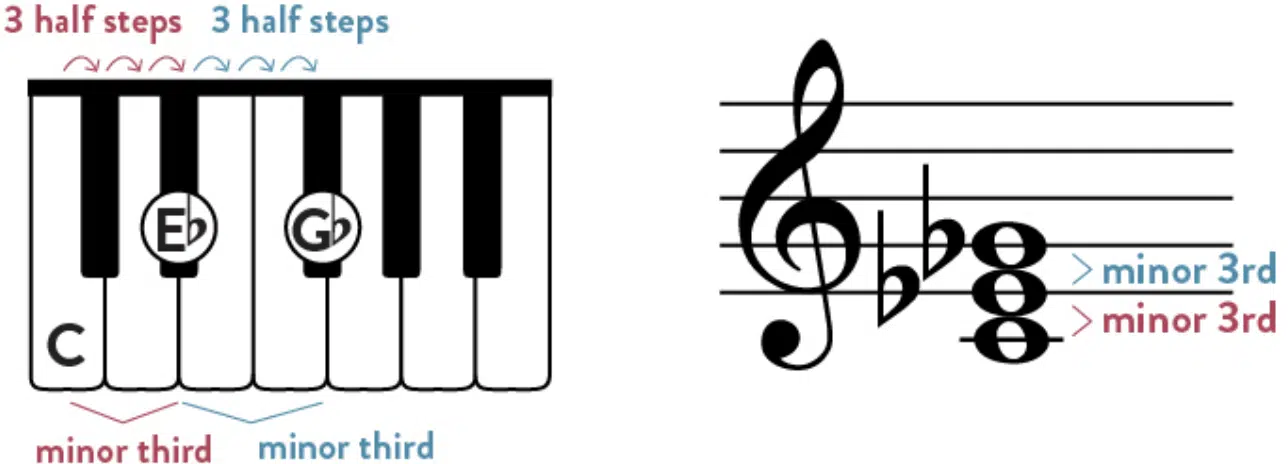
Diminished and augmented triads represent the more adventurous side of chord structures, each bringing a distinct flavor to musical compositions.
- A diminished triad is formed by a root, a minor third, and a diminished fifth.
- An augmented triad consists of a root, a major third, and an augmented fifth.
In the realm of digital music production, these triads are used to inject a sense of drama and unpredictability into a track.
An augmented chord, with its raised fifth, has a peculiar, almost ethereal sound that can add intrigue to a musical passage.
Similarly, with its sense of incompleteness, a diminished triad can create tension 一 urging resolution to a more stable chord.
Using these triads in digital music allows producers and artists to experiment with unconventional harmonies and progressions.
They are particularly effective in creating transitional sections within a track or building up to a climactic moment.
You can explore new harmonic territories and bring a fresh perspective to your music by understanding how to incorporate diminished and augmented triads.
Advanced Chords: Extending the Basics
Having established a solid foundation with triads, it’s time to delve into the world of advanced chords. These chords, including seventh chords and extended chords, offer a wealth of harmonic possibilities, enabling you to add complexity and sophistication to your music.
-
Seventh Chords and Their Impact
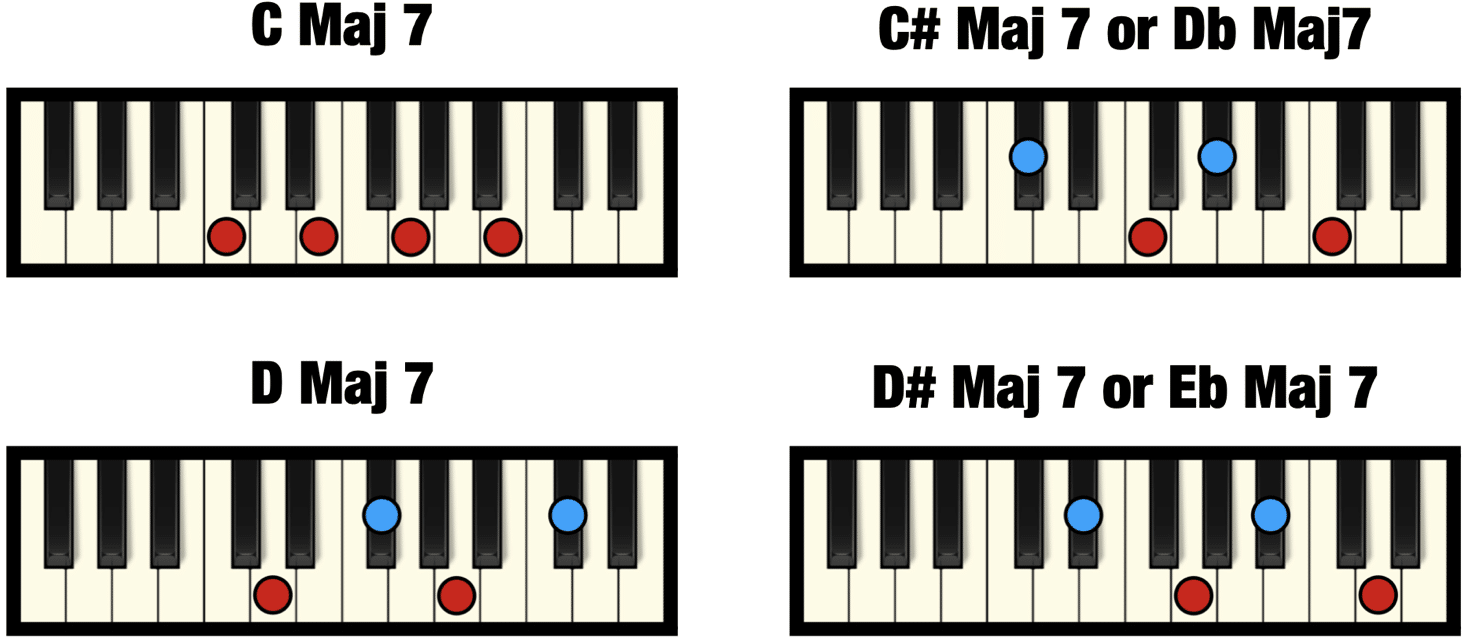
Seventh chords are a fundamental aspect of modern music, adding a layer of richness and complexity to basic triads.
These music chords are formed by adding a seventh interval to a triad, resulting in four-note chords like the:
- Major seventh
- Minor seventh
- Dominant seventh chords
Each type of seventh chord has its unique sound and function within a chord progression.
A major seventh chord, a good example, adds a dreamy, almost nostalgic quality to a major triad 一 constructed by adding a major seventh interval to a major triad.
This creates a consonant and subtly complex sound.
In contrast, a minor seventh chord, built on a minor triad with a minor seventh, has a more mellow and reflective sound.
These chords are widely used in genres like jazz, soul, and pop music, where their expressive qualities are highly valued.
Dominant seventh chords, formed by adding a minor seventh to a major triad, have a strong sense of tension and resolution.
They are often used to create movement in a chord progression, leading naturally to another chord a perfect fifth lower.
This characteristic makes them a staple in blues and rock music, where they contribute to the genre’s distinctive sound.
Understanding and effectively using seventh chords is key to creating sophisticated harmonies and dynamics.
These music chords can add depth to a simple progression, create a sense of movement, or introduce a contrasting mood.
-
Extended Chords: Adding Complexity

Extended chords take the concept of seventh chords further, incorporating additional notes beyond the seventh.
These chords (including ninth, eleventh, and thirteenth chords) are constructed by stacking thirds on top of a seventh chord.
They provide an even richer harmonic palette for music producers to work with.
Ninth chords, for example, add a ninth interval to a seventh chord, offering a lush, expansive sound; effective in creating atmospheric or spacey textures in a track.
Eleventh and thirteenth chords, by adding even more notes, bring a dense and complex sonority, often used in jazz and progressive music to create intricate harmonic landscapes.
Using extended chords allows for a first degree of creativity and expression.
You can manipulate these chords using various software tools, altering their:
Extended chords can be particularly effective in electronic and ambient music, where their rich harmonies can be layered with synthesizers and effects to create a unique sonic experience.
Extended chords are also a powerful tool for storytelling within music.
They can evoke complex emotions, create a sense of progression in a song, or as a tool for tension and release.
Make sure to experiment with extended chords for extra appeal.
Chord Progressions: Breaking it Down
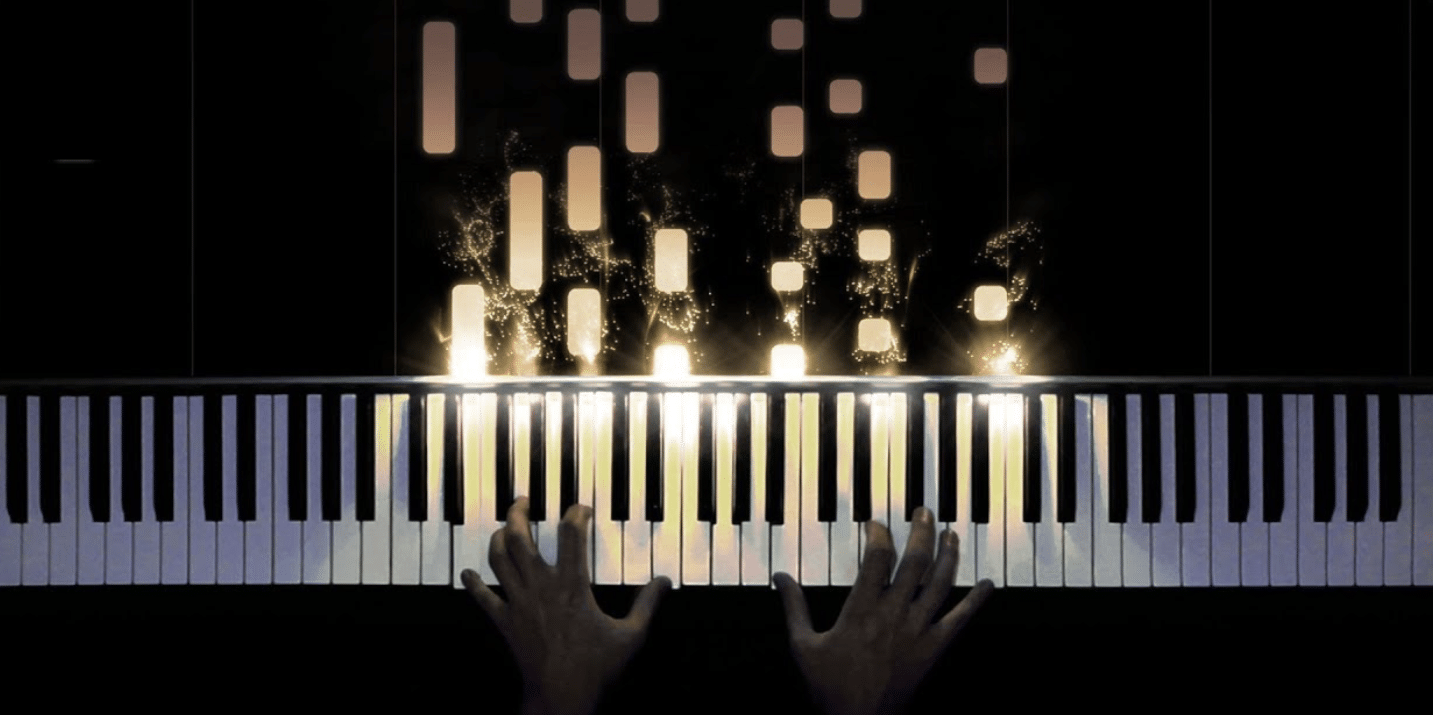
With an understanding of advanced chords, the next step is to explore how these (two or more) chords can be sequenced to form chord progressions.
Chord progressions are sequences of chords used to structure a piece of music.
They are the narrative thread that ties together the different elements of a track, providing a sense of direction and movement.
Understanding chord progressions is crucial for music producers, as they dictate the emotional journey of the music.
A well-crafted chord progression can evoke many emotions, from joy to sorrow and tension to release.
For example, a progression moving from a C Major Chord to an A Minor Chord can create a sense of melancholy 一 while a progression from C Major to G Major can feel uplifting and resolved.
These progressions are the foundation upon which a melody and rhythm are built, shaping the song’s overall feel.
Chord progressions are used to create structure in a professional track.
They can define the different sections of a song, such as:
- Verses
- Choruses
- Bridges
Each has a distinct mood and character.
You can use software to experiment with different chord progressions, finding the correct sequence to match the emotional intent of your music.
Chord progressions are not just limited to traditional major and minor chords.
Producers can incorporate advanced chords, such as seventh chords and extended chords, to add complexity and sophistication to their progressions.
This allows for more nuanced and expressive compositions.
Chords in Modern Music Genres

Chords play a pivotal role across all modern music genres, each employing them in distinct ways.
In pop music, for instance, major chords and simple, catchy progressions reign supreme, creating tracks that are easily memorable and widely appealing.
The use of C Major Chord, G Major Chord, and other basic chords dominate this genre, often resulting in a sound that is uplifting and relatable.
In electronic, dance, and house music, producers often experiment with extended chords and unusual progressions to create a sense of depth and complexity.
These genres might explore the use of:
- Minor triads
- Augmented chords
- Seventh chords
The manipulation of chord qualities and progressions in software gives these genres distinctive, forward-thinking sound.
Jazz and R&B, on the other hand, tend to favor more complex chords and progressions.
This showcases the rich harmonic textures that can be achieved with extended and seventh chords.
These genres often utilize chord inversions and modal interchanges 一 allowing for a more nuanced musical expression.
Understanding how chords function in different genres is key for digital music producers looking to create authentic and impactful music.
Music Theory: A Brief Recap
While creativity is a significant aspect of music production, having a foundational understanding of music theory can greatly enhance your ability to craft compelling music. Let’s touch on some key music theory concepts essential for understanding and building chords.
-
The Major Scale and Chord Building
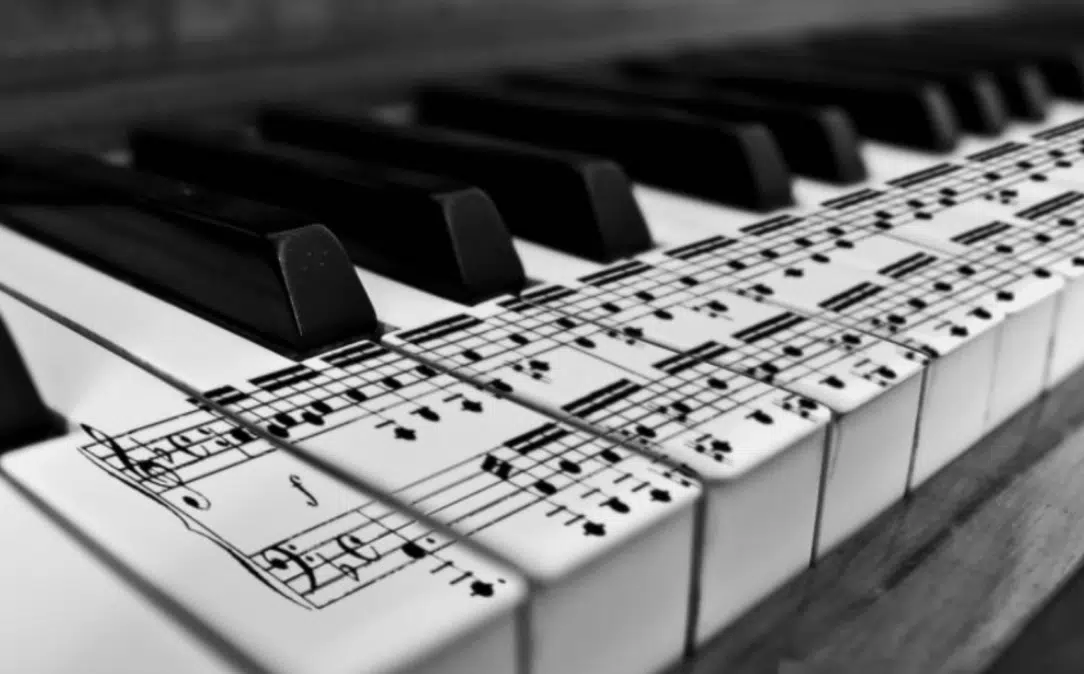
The major scale is central to Western music theory and is the starting point for understanding chord building.
It consists of seven notes, with the eighth being the octave of the first.
For example, the C Major Scale notes are C, D, E, F, G, A, and B.
One note of the scale can serve as the root note for building chords 一 giving rise to the diatonic chords of that key.
To build a chord, one typically starts with a root note and then adds other scale notes according to specific intervals.
A major third and a perfect fifth are added to the root note for a major triad.
For instance, the C Major Triad is formed by taking the root note (C), adding the major third (E), and the perfect fifth (G).
This formula can be applied to any note in the scale to create a series of chords that are harmonically related.
Minor chords are similarly built using the root, a minor third, and a perfect fifth.
In the case of the C Minor Chord, the notes would be C, E♭ (minor third), and G.
Understanding how these chords are constructed from the major scale is crucial for music producers, as it forms the basis of most harmonic progressions in Western music/baroque music.
NOTE: In music theory, Roman numerals represent chord progressions.
- An uppercase Roman numeral 一 Represents major chords within a key.
- A lowercase Roman numeral 一 Represents minor chords within a key.
Beyond major and minor triads, the major scale also provides the foundation for building more complex chords.
For example, seventh chords can be constructed by adding a seventh interval to a triad.
In a C Major Seventh Chord, the notes would be C (starting note), E, G, B.
This knowledge of how chords are built from scales is fundamental for producers to create and manipulate chords effectively in their music.
-
Understanding Chord Inversions and Voicings
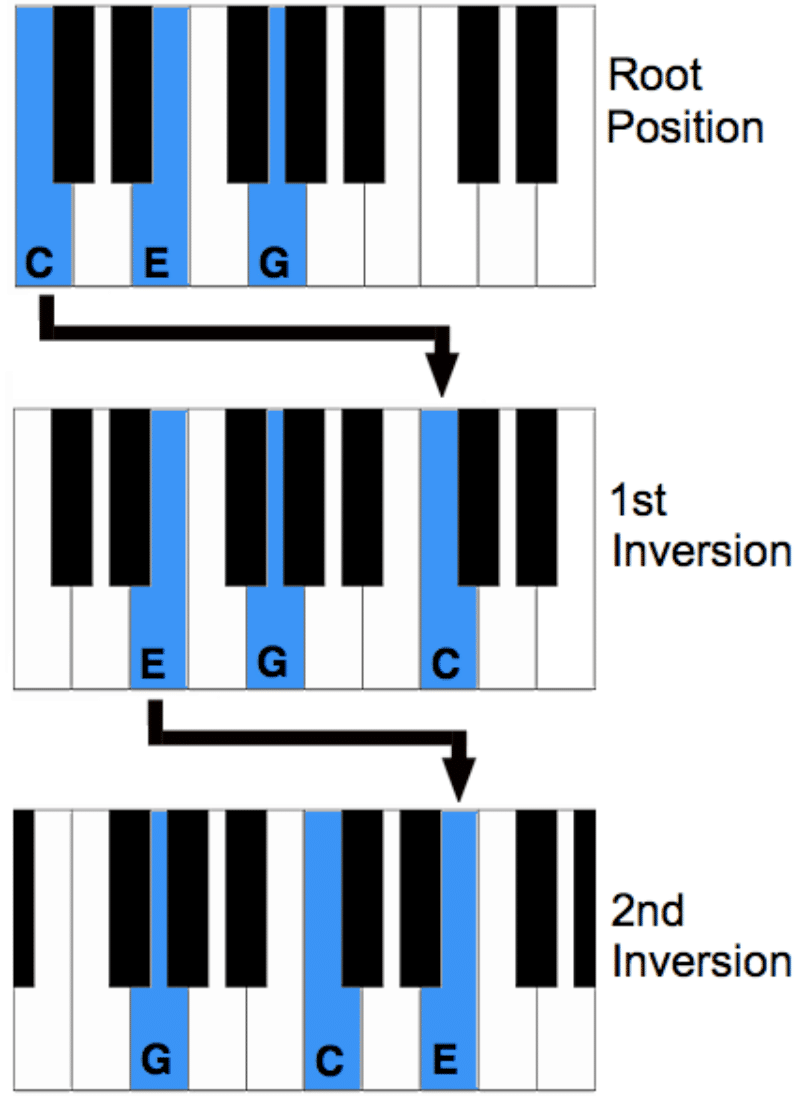
Chord inversions play a vital role when you write music or create beats in music, offering a way to vary the sound of a chord without changing its fundamental character.
A chord inversion involves changing the order of the notes in a chord, which can alter its sound and how it interacts with other chords in a progression.
For instance, in a C Major Chord:
- The root position is C-E-G
- The first inversion is E-G-C
- The second inversion is G-C-E
Inversions are beneficial in creating smooth transitions between chords in a progression.
By using a chord inversion, you can move to the next chord with minimal movement of notes 一 creating a more seamless and cohesive sound.
This technique is widely used in all forms of music, from classical compositions to modern pop and electronic tracks.
Digital music production software provides an expansive toolkit for experimenting with chord voicings and inversions.
Producers can easily rearrange the notes of a chord, layer different inversions, or even combine them with various audio effects to create unique textures.
This ability to manipulate chords extends the creative possibilities, allowing you to tailor your harmonic content to the specific needs of your music.
Music Chords: Final Thoughts
Exploring the world of music chords is essential for creating compelling and dynamic music.
From the fundamental major and minor chords to the complex structures of extended chords and progressions, this knowledge provides a powerful toolset for crafting unique soundscapes.
The understanding and application of music chords can help convey a wide range of emotions and stories through your beats.
In your journey as a music producer, remember that tools and resources can significantly enhance your workflow and creativity.
One of the best resources you can come across for mastering music chords is the free Advanced Scales MIDI Essentials.
This collection offers 24 unique and impressive MIDI scales, chord progressions, and melodies to help your music stand out.
Whether you’re a seasoned producer or someone who doesn’t have a formal degree in music theory, these meticulously crafted MIDI essentials provide a solid foundation for creating distinct and professional-sounding tracks.
Leveraging such resources, combined with the knowledge and techniques discussed in this article, you can now take your music production to new heights.
Embrace the power of music chords, experiment boldly, and let your musical imagination break free.
When you do, you’ll be able to create professional, chart-topping tracks in no time.
Until next time…







Leave a Reply
You must belogged in to post a comment.